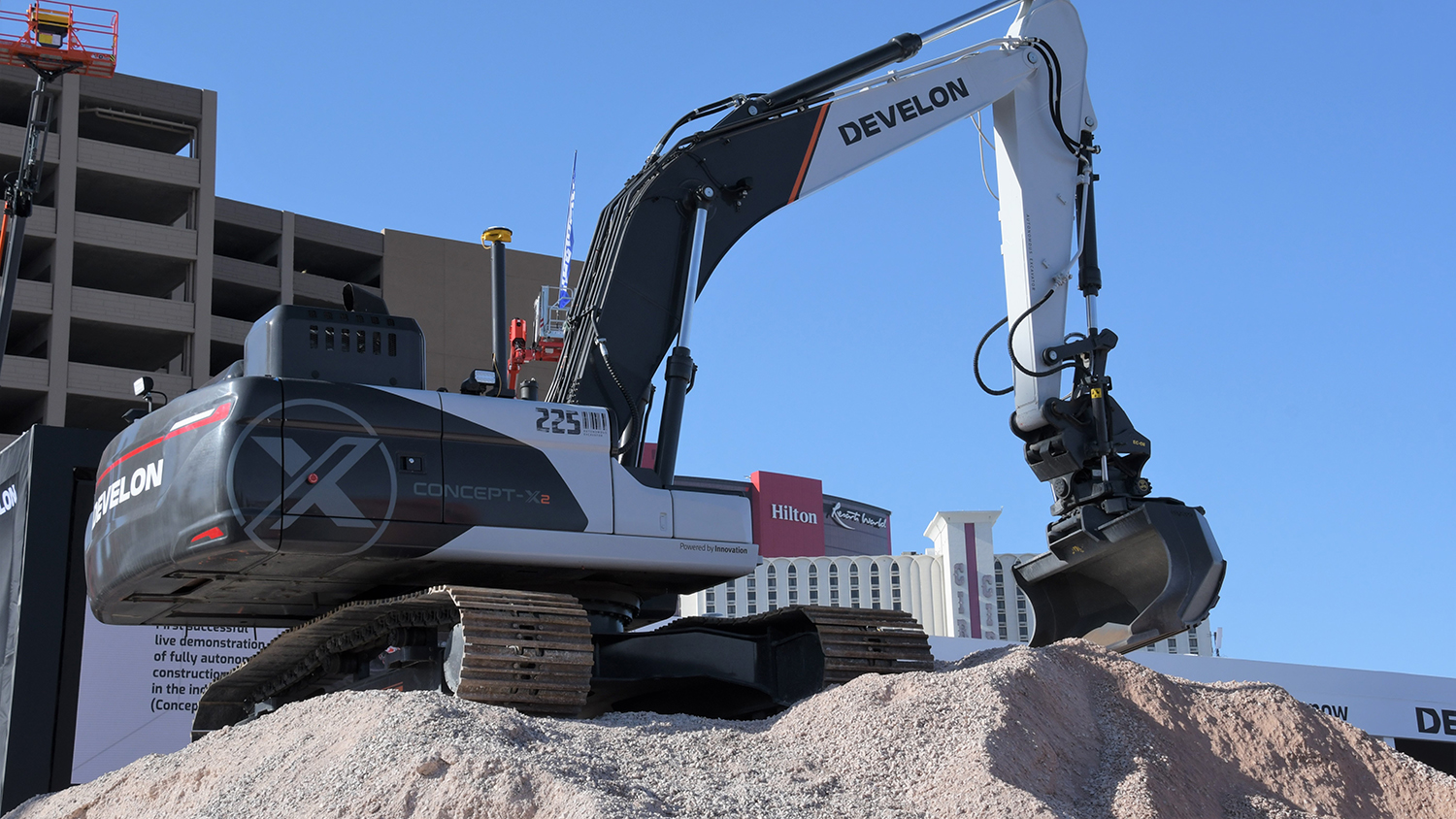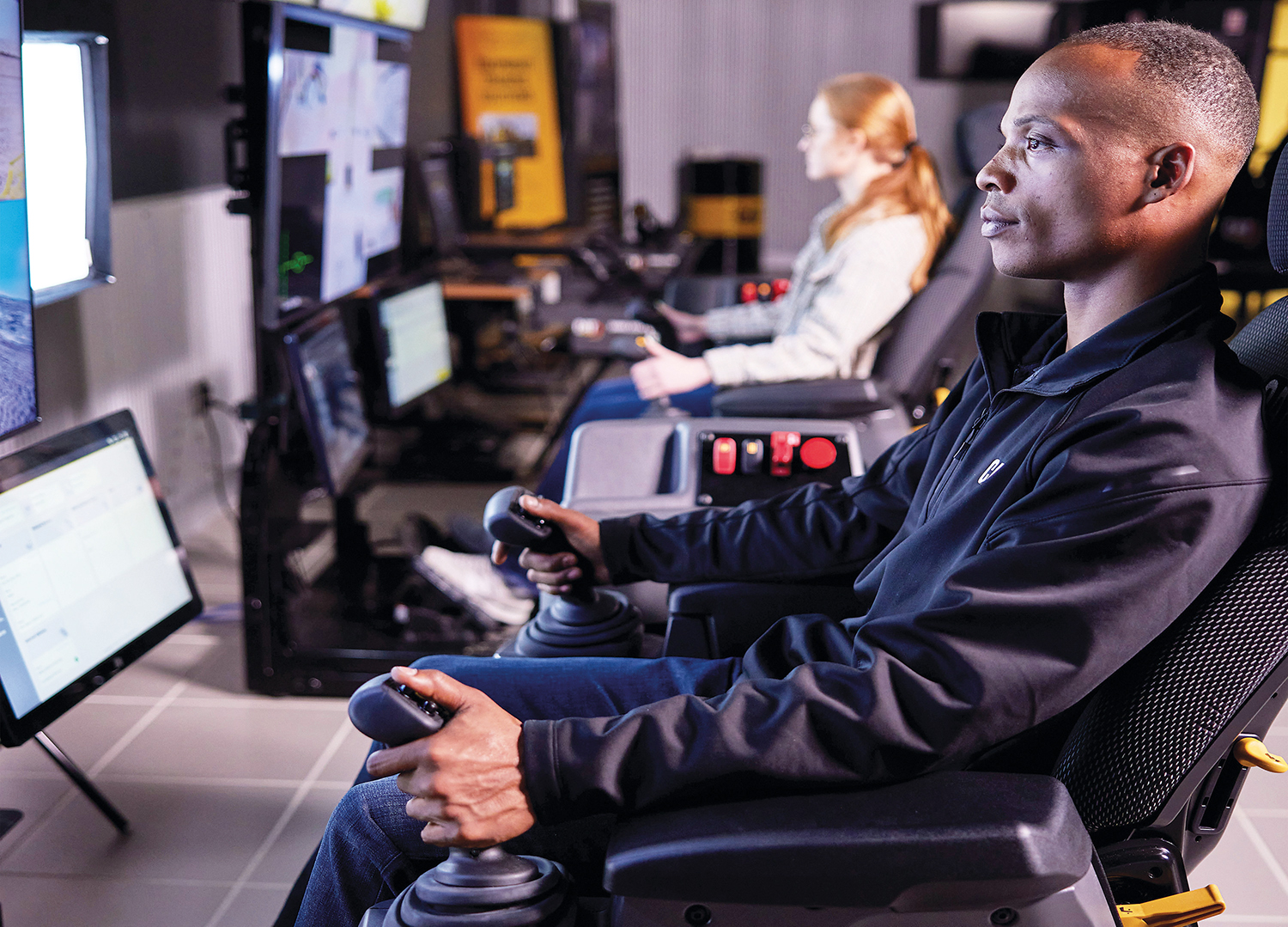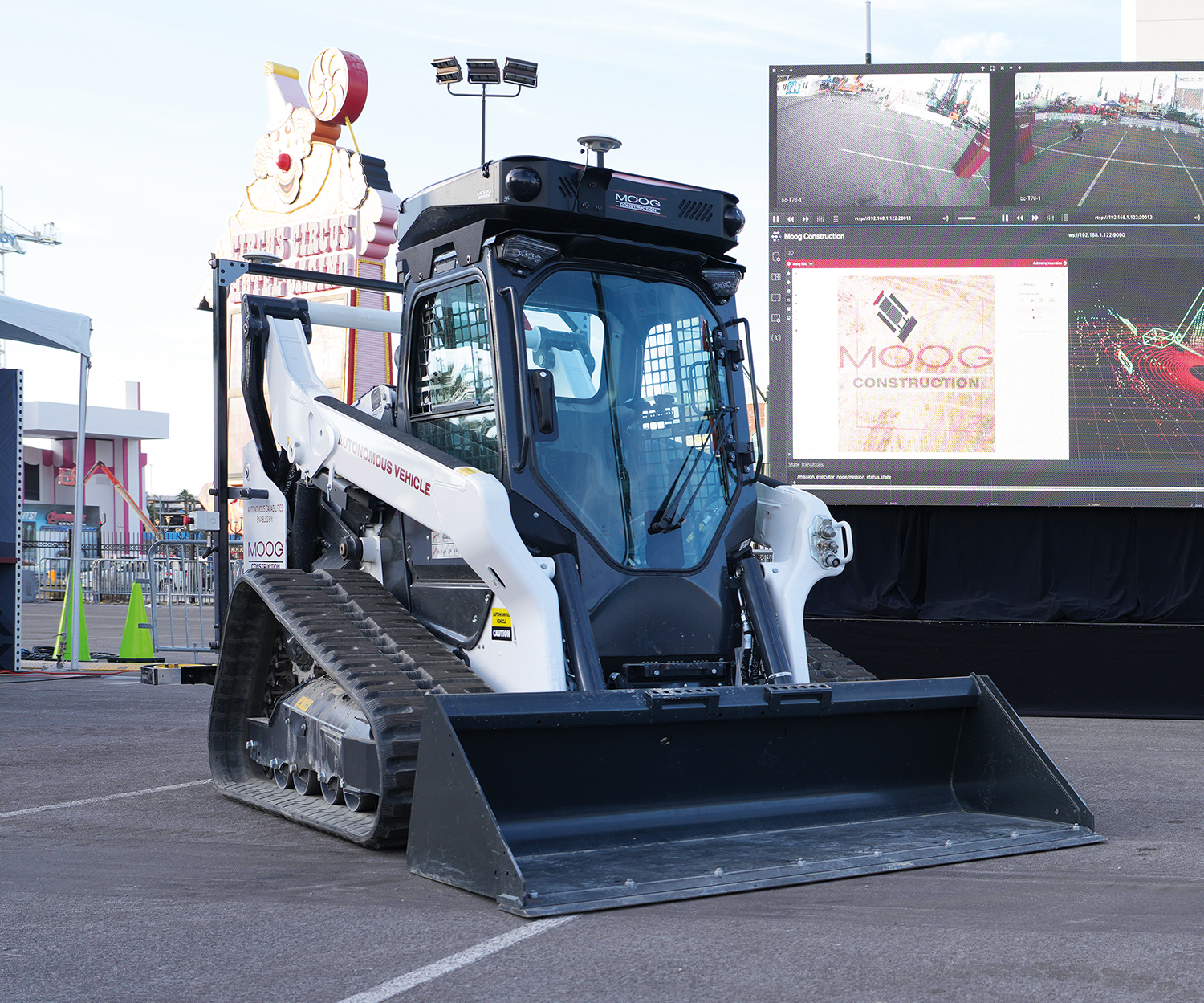
From cab-less excavators to autonomous dump truck fleets, the construction equipment sector is helping create a more efficient and greener industry, as Peter Haddock finds out.
The construction equipment sector’s progress towards machine autonomy gathers pace with each year.
ConExpo in Las Vegas, held every three years, is a global showcase for the industry and the 2023 event displayed the latest digital technology coming into the market, from both established players and emerging disruptors.
Operating from your office
Caterpillar, the world’s largest construction equipment manufacturer, demonstrated how it is now possible to remote control an entire earthmoving fleet from
the comfort of your office.
The Cat Command Station enables the user to work remotely in a comfortable, seated ‘virtual cab’ with familiar controls and machine displays, which can be located on site or on the other side of the world. This ‘non-line of sight technology’ means operators can work side by side in an office, with the working environment offering obvious benefits in terms of health and wellbeing.
The machines come complete with onboard technology such as 3D machine control – which helps operatives accurately position earthwork machinery based on 3D design models and GPS systems – and E-Fence safety systems, which automatically stop excavator motion within a predefined work area to avoid hazards.

This technology is already being looked at by major contractors in the UK, including Balfour Beatty. Sean Scarah, plant and logistics director for its asset and solutions division, says: “It’s not just about diggers anymore; it’s about a connected site where 3D machine control and autonomous plant help to deliver a project. This will help us on our journey to net zero.
“To succeed, we all must work more collaboratively together with equipment providers as well as supply chain partners, IT specialists and, of course, clients.”
A cab-less excavator
Another manufacturer making waves is newly rebranded Develon, formerly Doosan. It has unveiled a cab-less prototype dozer and excavator – the Concept-X2 – which shows how equipment can look when a cab isn’t needed. Controlled by remote operators, the machines combine machine-control technology with artificial intelligence, giving them the capability to be fully autonomous.
Product specialist Stephane Dieu says: “With our Concept-X2 platform, we have now made autonomous operation a reality, especially for those tasks that need to be performed in areas that are not accessible or have high safety risks.
“The equipment itself is part of a complete site solution. This revolves around a control centre which runs onsite analysis and vehicle control. By automating the construction site survey with 3D scanning, in future users will be able to maximise productivity by establishing the most efficient work plan.
“In addition to the control centre, specialist sensors and cameras monitor the job site and the performance of the whole machine, even reporting on machine health data to predict the remaining life of key parts and functions.”
Retrofitting autonomy
With an eye on the environment, industry newcomer and motion control specialist Moog Construction has demonstrated how to retrofit autonomous technology onto an older skid-steer loader. A division of precision aerospace component manufacturer Moog Inc, the Moog Construction team has created a completely autonomous solution.
Moog’s kit of parts – which includes processors and specialist sensors like LiDAR (light detection and ranging), GPS, ultrasonic and cameras – can be fitted to a machine with the system linked directly to a controller area network (CAN bus).

This kit of parts then links via wifi or a mobile network to Moog’s remote operations centre, through cloud software. For greater accuracy, the machine can be linked through a local base station.
The project’s 3D model is then uploaded on to the machine. This can be done remotely, and new updates added whenever needed. In addition, thanks to the LiDAR data capture, ‘as built’ work updates can be relayed back to a control centre in real time.
Moog sector specialist Thomas Greier says: “This is a new approach to autonomy that is very scalable. Because it’s a modular solution, you can transform a whole range of existing kit into autonomous equipment.
“This is great for monotonous or dangerous applications. For example, we have been trialling it in commercial solar farms to deliver panels and have seen a dramatic reduction in breakages. In addition, equipment owners who don’t want to put brand new equipment into dangerous applications can simply retrofit the solution to an older model.”
Autonomous truck fleets
Articulated dump truck (ADT) manufacturer Bell Equipment has spent the last four years developing autonomous technology for ADTs and reports that this is now at the ‘adoption’ stage with a UK client.
Bell Equipment product manager Brad Castle says: “Right now we are working closely with one of our UK customers. They are a leading mobile plant supplier and earthmoving contractor that has a large existing fleet of Bell ADTs, and they are looking to initially install an autonomous system onto two B30E trucks for a quarry application. Initially, they will be introducing autonomous ADTs on two of their sites as part of a continuous drive to improve safety.”

Bell currently works with two approved autonomous service providers: Xtonomy, based in Europe, and Pronto AI in the US. Xtonomy’s autonomous haulage systems (AHS) for mining and industrial applications feature a manufacturer-agnostic and interoperable platform.
Xtonomy uses a complex radar-based system to deliver continuous site and object mapping, with minimal manual interaction, and is well suited to ‘multiple load and dump sites’. In addition, the advanced in-cab display and supervision screens can be easily integrated with other equipment on site to provide a fully autonomous offering.
“The beauty of both systems is the flexibility they offer,” says Castle. “Bell provides a standard cab with no extra hardware taking up space, to create an environment where manual, remote or autonomous operation is interchangeable.
“This means that once an ADT has finished a contract on an autonomous site, the sensory and control system can easily be removed and the truck either fitted with a new system for another site or be used in a manual operation.”











